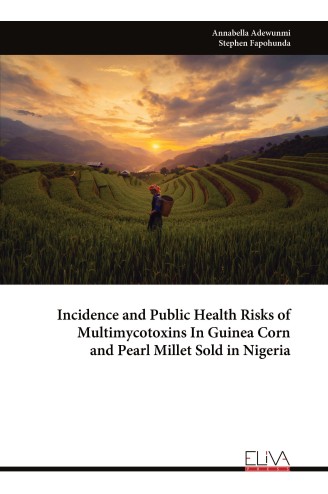
Incidence and Public Health Risks of Multimycotoxins In Guinea Corn and Pearl Millet Sold in Nigeria
$ 45.5
Description
Guinea corn (Sorghum bicolor L. Moench) and Pearl millet (Pennisetum glaucum (L) R. Br.) are cereals widely planted and consumed as staples in Nigeria. Mycotoxin contamination of these grains can present food safety risks to consumers, both adults and infants. The objective of this research was to investigate the occurrence of mycotoxins in S. bicolor and P. glaucum grains marketed in South West Nigeria, and to determine the possible public health risks involved in the consumption of these grains. A total of 32 pooled samples (17 sorghum and 15 millet) were taken from two major markets in each of the states in South West Nigeria. Fungi were isolated from the grains on malt extract agar and identified by molecular characterization. The occurrence and spectrum of mycotoxins and other secondary metabolites in the grains were investigated using liquid chromatography tandem mass spectrophotometry technique. Toxicological studies were carried out on 2-3 weeks old Wistar rats. Histological and hematological studies were carried out respectively on kidney, liver, heart and blood. Polymerase Chain Reaction (PCR) with Internally Transcribed Spacer (ITS) primers (ITS 1 and ITS 4) using DNA ladder (100bp - 3000bp) showed that the isolates were fungi while the DNA extraction with β-tubulin confirmed the presence of Aspergillus species and TEF1 gene confirmed Fusarium species. Gene sequencing of the amplicons identified predominantly Fusarium verticillioides, Fusarium coffeatum, Fusarium fujikuroi, Aspergillus niger and Aspergillus aculeatus. The nucleotide sequence data were submitted to the GenBank and were provided GenBank accession numbers. A total of 43 mycotoxins were detected in the 17 samples of S. bicolor and 77 were detected in the 15 samples of P. glaucum. Three of the regulated mycotoxins {(aflatoxins B1, B2 and deoxynivalenol (DON)}, were detected in P. glaucum but were absent in S. bicolor. The toxicological studies in Wistar rats showed histological abnormalities of the kidney, liver and heart compared to the control.



